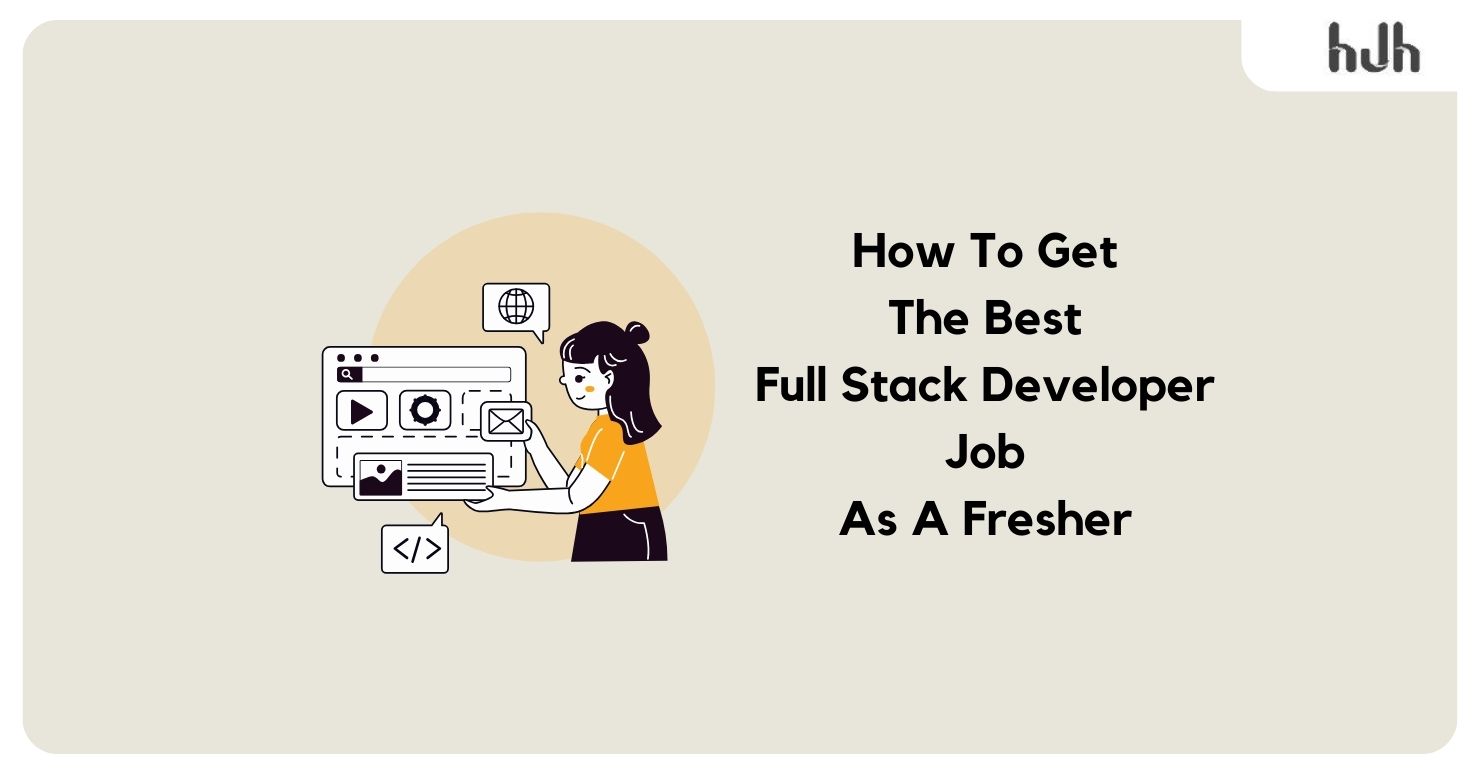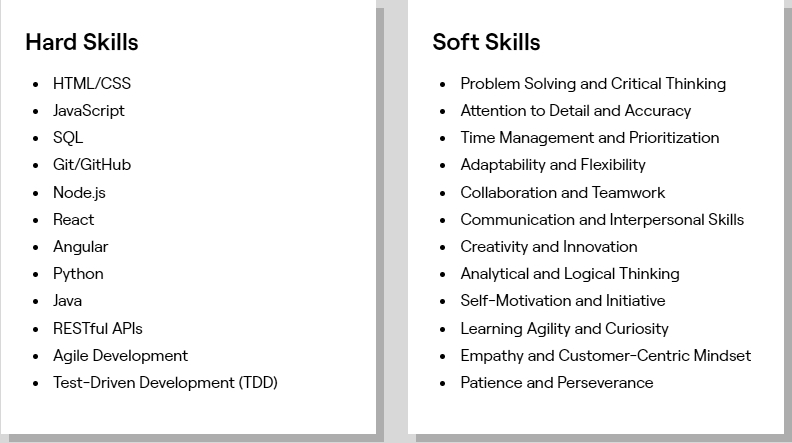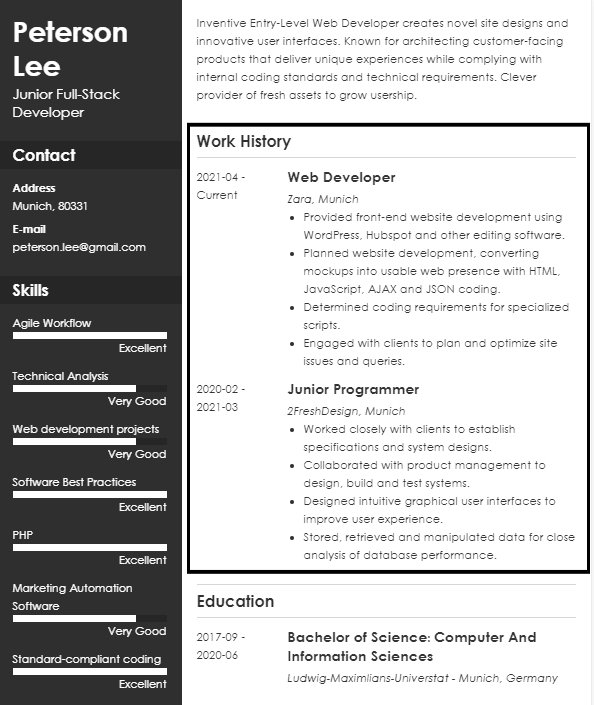Last Updated: November 2025
Embarking on your journey as a fresher in the dynamic realm of full stack development? Uncover the roadmap to securing the best full stack developer job with this comprehensive guide.
LinkedIn‘s latest report reveals a staggering 35% annual growth in demand for full-stack developers since 2015, setting the stage for an unprecedented surge in opportunities for aspiring tech enthusiasts.
Let’s navigate the intricacies and stack the odds in your favor by understanding how to get a IT job with no experience. By mastering these strategies, you’ll also learn how to get started in tech with no experience, positioning yourself for that coveted career launch.
Table of Contents
- I. Understanding the Full Stack Developer Role
- II. Why Pursue a Career as a Full-Stack Developer
- III. Educational Pathways and Certifications
- IV. Building a Robust Portfolio
- V. Mastering Programming Languages and Frameworks
- VI. Version Control and Collaboration Tools
- VII. Soft Skills for Full Stack Success
- VIII. Networking and Building Professional Relationships
- IX. Crafting an Impactful Resume
- X. Preparing for Technical Interviews
- XI. Navigating Job Search Platforms
- XII. Salary Negotiation Tips
- XIII. Continued Learning and Skill Enhancement
- XIV. Conclusion
I. Understanding the Full Stack Developer Role
A. Defining the Full Stack Developer
Embarking on your journey to secure the best full stack developer job requires a clear understanding of the role. As a full-stack developer, you are the architect of both front-end and back-end solutions, possessing a versatile skill set that spans the entire web development spectrum. To make this transition smoother, it’s crucial to learn how to become a full stack developer with no experience, ensuring that you build a strong foundation in the necessary skills and technologies.
Unraveling the layers, a full-stack developer is proficient in both client-side and server-side development. On the front end, you’ll master languages like HTML, CSS, and JavaScript, ensuring seamless user experiences. Simultaneously, delve into the server-side realm with languages like Python, Ruby, or Node.js, managing databases and server configuration.
The essence of a full-stack developer lies in bridging the gap between design and implementation. Your expertise encompasses not just coding, but also understanding user interfaces, server architecture, and the seamless integration of various technologies. Embrace the holistic role, and you’ll stand out in the competitive landscape of full stack development.
For those wondering how to get into tech with no experience, starting with full-stack development offers a comprehensive introduction to the tech world. By mastering both front-end and back-end technologies, you gain a versatile skill set that makes you a valuable asset in various roles. This approach not only helps you understand how to get into the tech industry with no experience but also equips you with the practical knowledge needed to thrive in it.
B. Key Responsibilities and Skill Set Overview
Unlocking the best full stack developer job demands a mastery of key responsibilities and a diverse skill set. Here’s a succinct breakdown:
- Front-End Proficiency: Craft visually appealing user interfaces with responsive layouts and user-friendly navigation to improve the overall user journey.
- Back-End Expertise: Efficiently oversee database management to ensure peak performance levels. Execute server-side scripting for seamless application functionality.
- Coding Languages Mastery: Excel in languages such as Java, Python, or PHP for comprehensive development. Seamlessly integrate front-end and back-end components for cohesive applications.
- Version Control Proficiency: Utilize Git or similar systems for efficient collaboration and streamlined tracking of changes. Ensure codebase integrity through systematic version control practices.
- Effective Communication: Act as a bridge between teams comprising both technical and non-technical members, simplifying the technical information into understandable language.
Navigating the full stack developer landscape requires a holistic approach, combining technical finesse with effective communication and collaboration skills. By mastering these responsibilities and honing your skill set, you position yourself for success in the competitive job market. Understanding how to get a front end developer job with no experience can be a crucial step in your journey, as it allows you to focus on building the necessary front-end skills while gradually transitioning to full-stack development.
II. Why Pursue a Career as a Full-Stack Developer
A. Versatility in Tech: A Competitive Edge
Embarking on a full stack development journey in India positions you at the forefront of technological innovation. Your versatility across front-end and back-end domains isn’t just a skill; it’s a competitive edge in a dynamic job market.
According to a PwC survey,
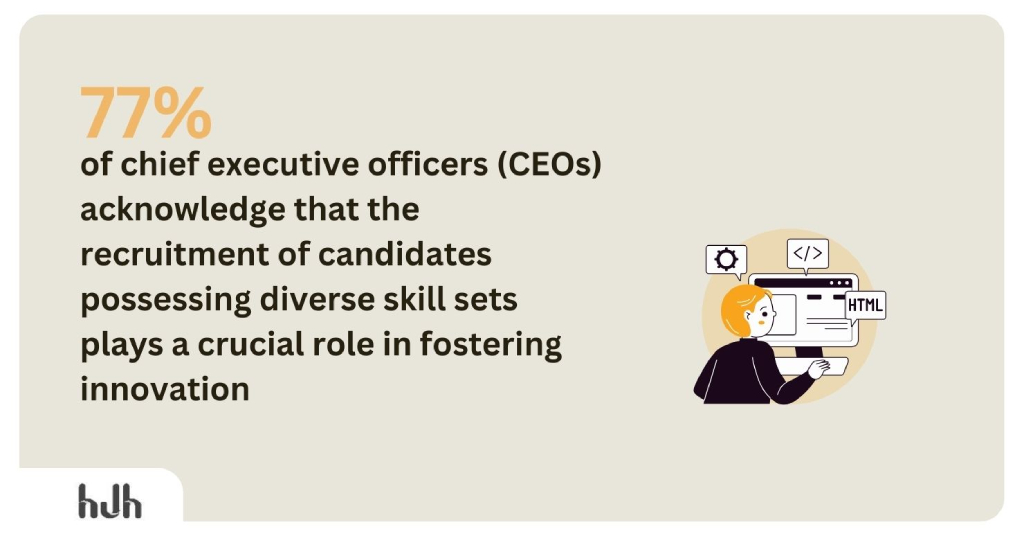
In the Indian tech landscape, where diversity in project requirements is the norm, your capacity to navigate various development aspects stands out. As a full stack developer, you’re equipped not only to code but to understand the entire development lifecycle. This holistic approach is valued by companies, enhancing your problem-solving acumen and positioning you as a sought-after professional.
The significance of versatility in the Indian tech industry is underscored by the fact that 82% of recruiters believe that candidates with a diverse skill set are more likely to succeed in their roles.
By choosing a career as a full-stack developer in India, you align yourself with the evolving needs of the industry, where versatility is key to securing and excelling in the best job opportunities.
B. Industry Trends and Future Prospects
In the vibrant landscape of Indian tech, pursuing a full-stack developer career unfolds promising industry trends and future prospects for you.
According to a recent report, the Indian IT industry is projected to reach $350 billion by the year 2026, creating extensive opportunities for full-stack developers.
The increasing adoption of digital transformation across sectors in India further accentuates the demand for skilled full-stack developers. Companies are actively seeking professionals who can not only build robust web applications but also adapt to emerging technologies.
As per the LinkedIn Future Prospects report, the increasing emphasis on web and app development by enterprises, aiming to propel digital growth, is set to elevate the demand for full-stack roles.
Additionally, India’s thriving startup ecosystem is fueling the need for versatile developers capable of handling diverse technological challenges. As startups continue to flourish, your full-stack proficiency aligns perfectly with their multifaceted development requirements.
Stay abreast of emerging technologies, analyst predictions indicate that the count of tech startups in India built on the Java stack is expected to double by 2024.
Tech Nation’s Diversity and Inclusion in UK Tech report found that only 15% of tech workers are Black and minority ethnic (BAME).
According to the Diversity and Inclusion in UK Tech Report by the government-funded growth network Tech Nation, around 50% of workers in the labor market are women, whereas in the tech industry, women represent only 26% of the workforce. Additionally, a recent report on diversity in UK tech companies revealed that 77% of tech director roles are filled by men.
At the beginning of 2022, the government-funded growth network Tech Nation revealed that nearly three million people, which accounts for 9% of the UK workforce, are employed in the UK tech industry.
One study revealed that 40% of employees may leave a company following experiences of harassment, bullying, or stereotyping, opting to pursue alternative employment.
Research indicates that 78% of employees face some sort of unfair behavior or treatment at work, which can include being talked down to, psychologically manipulated, or made physically uncomfortable. Additionally, 37% of employees indicated that unfair treatment was a major factor in their decision to leave their company.
According to research from the Kapor Center, toxic workplace cultures cost companies a significant $16 billion annually, specifically within the tech industry.
In summary, the dynamic tech landscape in India presents a wealth of opportunities for full stack developers. Stay attuned to industry trends, upskill in emerging technologies, and position yourself as a valuable asset to secure the best job prospects in this evolving market.
Recommended article – 10 Best and High-Paying Work From Home Tech Jobs
III. Educational Pathways and Certifications
A. Choosing the Right Educational Background
As you embark on the journey to become a full stack developer, selecting the right educational background lays a solid foundation. While a traditional computer science degree is beneficial, it’s not the sole pathway. Many successful full stack developers have diverse educational backgrounds, ranging from engineering to mathematics.
Consider specialized full-stack development courses and bootcamps that provide hands-on experience and a focused curriculum.
- Udacity’s Full Stack Web Developer Nanodegree: This program covers front-end and back-end technologies, including React, Node.js, and databases.
- Coursera’s Full Stack Web Development Specialization: This specialization delves into HTML, CSS, JavaScript, and full stack development using MEAN stack.
- edX’s Professional Certificate in Full Stack Web Development: This certificate program covers front-end and back-end technologies, along with database management.
- FreeCodeCamp Full Stack Developer Certification: An open-source platform providing a comprehensive curriculum on full-stack development, including hands-on projects.
- Le Wagon’s Full-Stack Web Development Bootcamp: A coding bootcamp known for its intensive and practical approach, covering Ruby on Rails, JavaScript, and more.
These programs often offer a quicker route to acquiring the specific skills needed in the industry.
Remember, the key is to choose an educational path that aligns with your learning style and career goals. Whether it’s a degree, a bootcamp, or online courses, the ultimate aim is to equip yourself with the knowledge needed to understand how to get a web developer job without experience. By building a robust foundation in both front-end and back-end development, these educational options prepare you to face challenges and seize opportunities in the field.
B. Certifications That Boost Your Profile
When aiming to bolster your full-stack developer profile, strategically chosen certifications can elevate your expertise. Here are some noteworthy certifications that command attention:
- AWS Certified Full Stack – Associate: Validate your proficiency in building and deploying applications using Amazon Web Services, a valuable certification in the cloud computing era.
- Microsoft Certified: Azure Developer Associate: Ideal for those inclined towards Microsoft’s Azure ecosystem, this certification showcases your skills in designing, building, testing, and maintaining cloud applications.
- MongoDB Certified Developer Associate: Focus on NoSQL databases with this certification, demonstrating your ability to work with MongoDB, a popular choice for modern web development.
- Google Professional Certificate in Full Stack Development: Offered on platforms like Coursera, this certification covers a broad range of skills, including HTML, CSS, JavaScript, Node.js, and databases.
- CompTIA Security+: While not full-stack specific, this cybersecurity certification adds a valuable layer to your profile, especially if you deal with sensitive data or work in secure development environments.
- Certified ScrumMaster (CSM): Showcase your understanding of agile methodologies, a crucial aspect in many development environments, with this widely recognized certification.
Remember, the key is to align certifications with your career goals and the specific technologies you work with. Each certification adds a unique dimension to your skill set, enhancing your marketability as a full-stack developer.
IV. Building a Robust Portfolio

A. The Significance of a Well-Crafted Portfolio
1. Showcasing Your Skill Set
Craft a portfolio that serves as a visual representation of your skills. Include diverse projects, highlighting both front-end and back-end proficiency. This allows potential employers to see your capabilities in action.
2. Building Credibility and Trust
A well-curated portfolio establishes trust and credibility. Displaying completed projects, along with project descriptions and outcomes, gives employers a tangible sense of your capabilities. It’s your opportunity to prove, not just claim, your expertise.
3. Demonstrating Problem-Solving Abilities
Each project in your portfolio is a narrative of problem-solving. Explain the difficulties encountered and the creative fixes you applied. This showcases your ability to navigate complexities, a prized trait in full-stack development.
4. Reflecting Adaptability and Continuous Learning
Updating your portfolio with new projects and technologies regularly reflects your adaptability and underscores your commitment to continuous learning. It’s a dynamic document that grows with your skills.
5. Enhancing Your Online Presence
Your portfolio serves as a professional online presence. Ensure it is easily accessible and well-organized. This not only aids potential employers in evaluating your work but also contributes to your overall online brand as a full-stack developer.
6. Setting You Apart in the Job Market
In a competitive job market, a standout portfolio is your differentiator. It distinguishes you from other candidates and reinforces your suitability for the role. Create an attractive and easy-to-navigate design to ensure a lasting impression.
B. Showcasing Projects and Contributions
Crafting an impactful portfolio isn’t just about presenting a list of skills; it’s about narrating your journey through real-world projects.
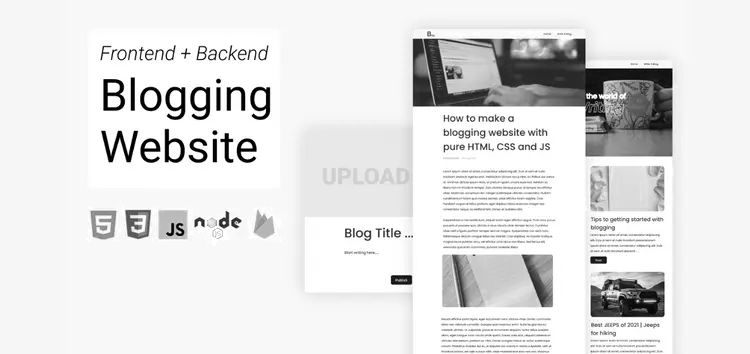
Here’s how to effectively showcase your projects and contributions to stand out in the competitive landscape:
1. Diverse Project Selection
When selecting projects to feature, aim for diversity. Include a mix of personal projects, open-source contributions, and any relevant coursework projects. This showcases your versatility and adaptability. For instance, highlight a personal project where you integrated a new technology stack or a contribution to an open-source project that aligns with your interests.
2. Provide Project Context
Accompany each project with a brief context. Explain the problem the project aimed to solve, the technologies used, and your specific role in its development. For example, if you collaborated on a team project during your coursework, specify your contributions and responsibilities.
3. Quantify Impact
If a project resulted in efficiency improvements, increased user engagement, or any measurable outcome, highlight it. Employers appreciate seeing tangible results. Share metrics, such as improved page load times or increased user interactions.
4. GitHub Repository Links
Include links to the GitHub repositories of your projects to allow employers to explore your code which also showcases your commitment to transparency and collaboration. For instance, share a link to a repository where you actively contributed to the codebase, demonstrating your coding proficiency.
5. Collaborative Projects
Highlight any collaborative projects you’ve been a part of. This could include group assignments during your academic tenure or joint efforts on coding platforms. Specify your role in the collaboration and the impact achieved collectively.
For instance, link to a team project where you collaborated to develop a feature-rich web application. Understanding how to get a tech job with no experience often involves showcasing your ability to work well with others and contribute meaningfully to team efforts.
By curating a portfolio that effectively showcases the depth and breadth of your projects, you provide potential employers with a holistic view of your skills, problem-solving abilities, and collaborative nature.
Here’s an example of a well-crafted portfolio that effectively showcases a range of projects:

V. Mastering Programming Languages and Frameworks
A. Core Languages Every Full Stack Developer Should Know
To excel in the dynamic realm of full stack development, mastering key programming languages is imperative. Equip yourself with a versatile skill set by delving into these essential languages:
1. JavaScript
Embrace the language that powers dynamic content on the web. JavaScript is fundamental for front-end development, enabling you to create interactive and responsive user interfaces. Master its nuances to navigate the intricacies of client-side scripting.
JavaScript is used as the client-side programming language on approximately 98.7% of websites, encompassing around 49,501,698 sites on the Internet.
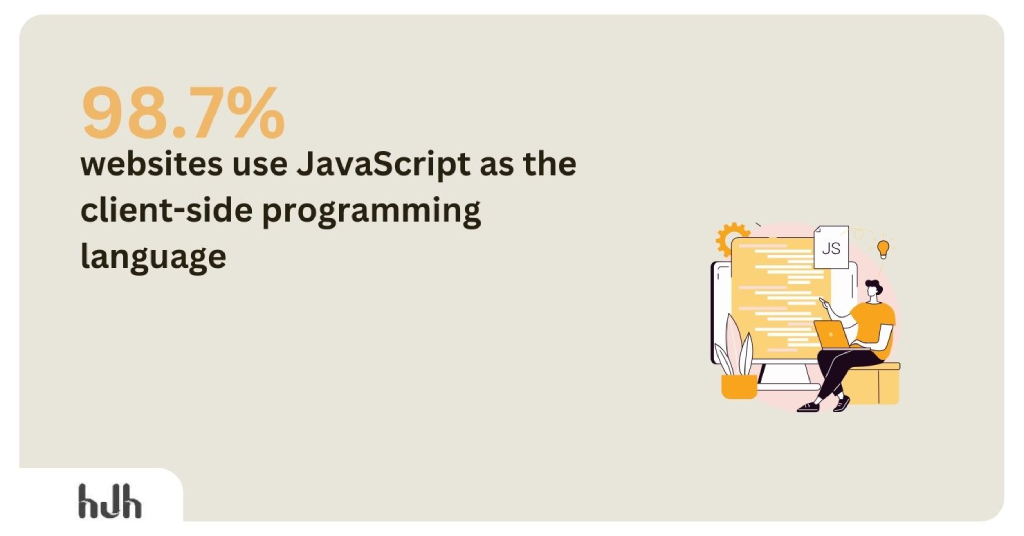
2. Python
Renowned for its readability and versatility, Python is a powerhouse for both back-end development and scripting. Its simplicity makes it an ideal language for beginners, while its scalability ensures its relevance in complex applications. Acquaint yourself with Python’s diverse applications, from web frameworks to data analysis.
In 2020, Python secured the top spot in the list of most in-demand AI skills, as reported by a Forbes article on the subject.
3. Java
A stalwart in the programming landscape, Java’s “write once, run anywhere” philosophy makes it a cornerstone for back-end development. Widely used in enterprise-level applications, mastering Java empowers you to build robust, scalable server-side solutions. Dive into its object-oriented paradigm and threading capabilities for comprehensive proficiency.
The average annual salary for a Java developer in India amounts to ₹443,568, equating to ₹175 per hour.
4. HTML & CSS
While not traditional programming languages, HTML and CSS are the bedrock of web development. HTML structures your content, while CSS styles it, shaping the visual appeal. Understand the symbiotic relationship between these two to create seamless, visually engaging websites.
A recent statistical report showed,
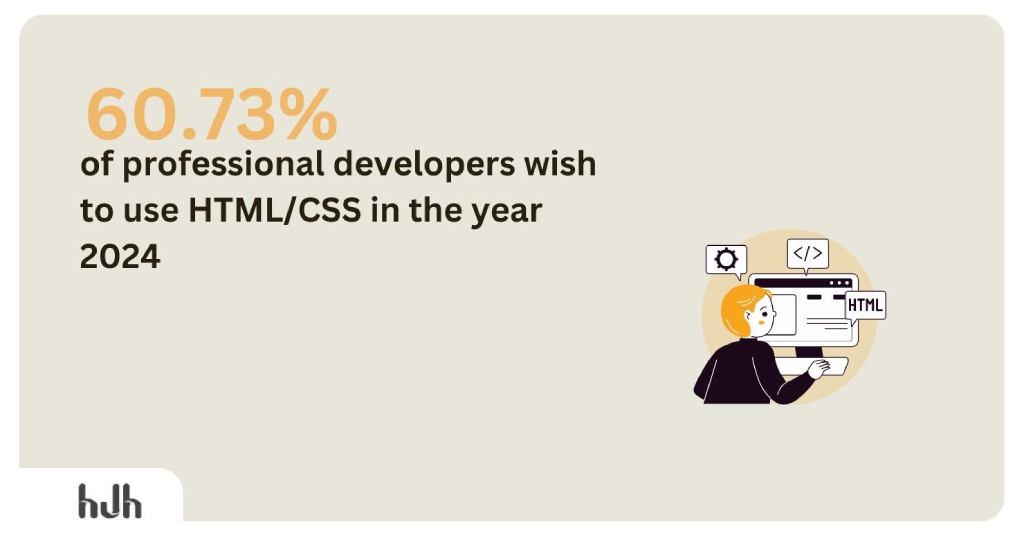
5. SQL
Database management is intrinsic to full-stack development, and SQL is the language of choice. Grasp the fundamentals of Structured Query Language to effectively interact with databases. From data retrieval to database design, SQL proficiency is indispensable for holistic full-stack capabilities.
Top SQL skills you should know:
- Basic SQL Concept Skills
- Microsoft SQL Server
- SQL systems
- Online Analytical Processing (OLAP)
- SQL data analysis
- Database architecture knowledge
6. Ruby
Known for its elegant syntax and readability, Ruby is a dynamic, object-oriented language. Widely used in the Ruby on Rails framework, mastering Ruby facilitates efficient back-end development. Dive into its expressiveness and conventions, unleashing the power of rapid application development.
From February 2022 to January 2024, the Google Trends data for Ruby on Rails reveals its sustained popularity and upward trending trajectory as a backend framework.
By honing your expertise in these core languages, you establish a strong foundation for full-stack development, empowering you to seamlessly navigate both front-end and back-end complexities.
B. Frameworks That Enhance Your Skill Set
To fortify your full-stack developer arsenal, acquaint yourself with powerful frameworks that streamline development processes and elevate your skill set. Here are essential frameworks every aspiring developer should master:
1. React.js
Embrace React.js for dynamic and efficient front-end development. Developed by Facebook, this JavaScript library facilitates the creation of interactive user interfaces. Learn to build component-based UIs, enhancing the user experience. Explore its versatility in single-page applications and complex interfaces.
Among professional JavaScript developers, 42.87% currently utilize React.js, while an additional 48% express interest in acquiring proficiency in this JavaScript framework in 2024 and beyond, as per the recent Java trends report.
2. Node.js
Asynchronous, event-driven, and perfect for scalable back-end development, Node.js is a must-have skill. Leverage its JavaScript runtime to build server-side applications swiftly. Explore its extensive package ecosystem with npm (Node Package Manager) for efficient code management.
Almost half of the budding coders,
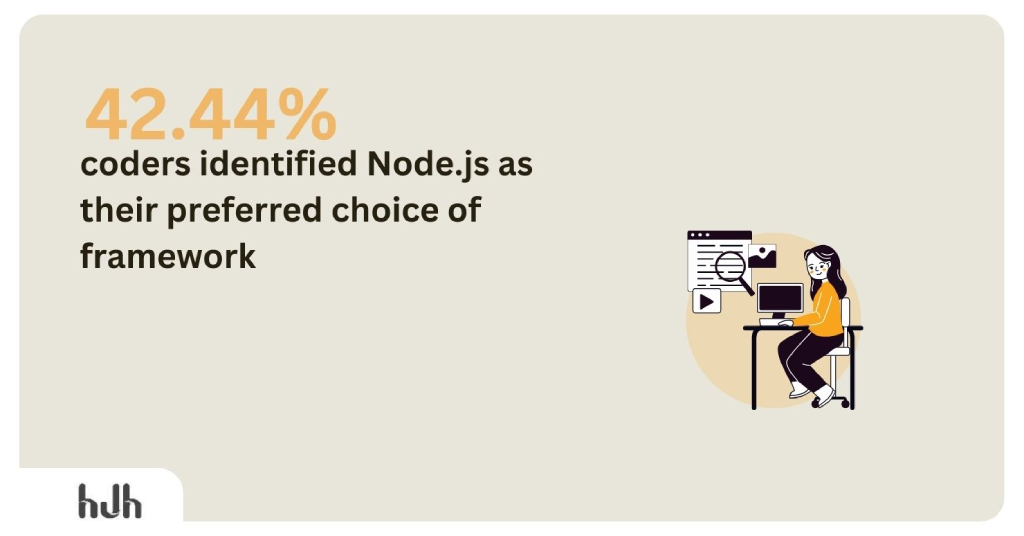
And this preference extends beyond just newcomers!
3. Angular
Developed and maintained by Google, Angular is a robust front-end framework. Master Angular to build dynamic single-page applications with ease. Its comprehensive toolkit includes features like two-way data binding, dependency injection, and modular development, ensuring seamless front-end experiences.
Angular stands out as a popular option for crafting single-page applications (SPAs), delivering a comprehensive framework tailored for full-featured SPAs.
4. Django
Ideal for rapid and clean back-end development, Django is a high-level Python web framework. Master its model-view-template (MVT) architecture for efficient and maintainable code. Django’s “batteries-included” philosophy offers built-in features for authentication, routing, and more.
Django, a top-tier Python web framework, is known for its clear syntax and versatility, making it user-friendly for developers of all experience levels.
5. Express.js
For minimalist and flexible back-end development with Node.js, delve into Express.js. This lightweight framework simplifies the creation of robust APIs and web applications. Its simplicity, along with a vast middleware ecosystem, makes it an excellent choice for server-side development.
Express.js, thriving on Node.js’s widespread acclaim, leads the market as a top web application framework since it offers developers scalable and easy-to-use APIs.
6. Spring Boot
If Java is your language of choice, explore Spring Boot for back-end development. Backed by the Spring Framework, it simplifies Java development, allowing you to focus on building robust applications. Spring Boot’s convention-over-configuration approach accelerates development.
Java With Spring Boot Developers in India earn an average annual salary of ₹5,50,000, with an additional cash compensation averaging ₹50,000, ranging from ₹9,757 to ₹75,000.
By mastering these frameworks, you not only enhance your skill set but also position yourself as a well-rounded full-stack developer, capable of handling diverse projects and challenges in the Indian tech landscape.
VI. Version Control and Collaboration Tools
A. Embracing Version Control: A Developer’s Best Friend
Embrace version control as your steadfast ally in the full-stack development journey. Git, the cornerstone of version control, allows you to track changes, collaborate seamlessly, and safeguard your code. With Git, each modification is documented, offering a safety net and facilitating collaborative development.
Opt for platforms like GitHub or GitLab to amplify version control benefits. These platforms provide a centralized space to host your repositories, enabling collaboration with peers and potential employers. GitHub, in particular, serves as a dynamic portfolio where your contributions to open-source projects and collaborative endeavors are showcased.
Branching within Git empowers you to experiment with new features without disrupting the main codebase. This not only enhances your development workflow but also showcases your ability to implement new functionalities iteratively.
Git is utilized by more than 90% of survey participants, underscoring its essential role in a developer’s toolkit.
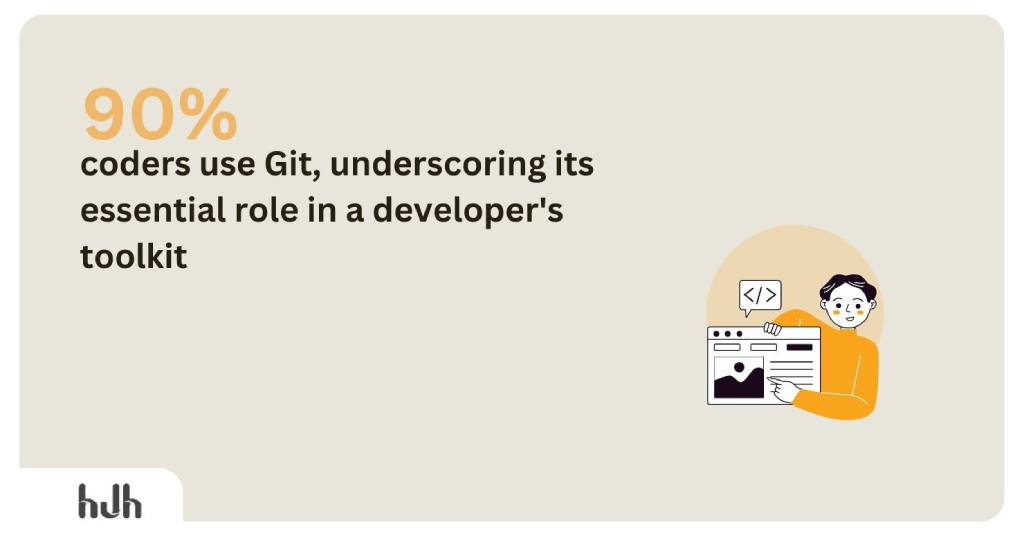
There are a few other alternative version control systems to Git:
- CVS – CVS functions as an interface for the Revision Control System (RCS), an earlier version control system that oversees individual files rather than entire projects.
- Mercurial – Serves as a distributed revision control tool designed for software developers.
- Perforce – Monitors and oversees alterations to your source code, digital assets, and sizable binary files.
Embracing version control is not just a skill; it’s a testament to your commitment to efficient and collaborative coding practices.
As a full-stack developer, proficiency in version control not only streamlines your development process but also plays a crucial role in understanding how to get IT job without experience. By mastering Git and leveraging platforms like GitHub, you position yourself as a developer who not only writes code but does so in a structured, collaborative, and version-controlled manner, making you a more attractive candidate in the competitive job market.
B. Collaborative Tools for Efficient Project Work
Collaboration is key to project success, and these tools are your ticket to seamless teamwork.
1. Slack
Stay connected effortlessly with real-time messaging, file sharing, and integrations. Slack streamlines communication, keeping your project discussions organized and accessible.
2. Trello
Visualize your project’s progress with Trello’s boards, lists, and cards. Collaborate on tasks, set deadlines, and achieve project milestones with ease.
3. Google Workspace
From Docs and Sheets to Meet and Drive, Google Workspace fosters real-time collaboration. Edit documents simultaneously and conduct virtual meetings effortlessly.
4. Asana
Organize your project tasks with Asana, offering a user-friendly platform to assign, track, and manage work. Enhance efficiency while ensuring your team stays on the same page.
These collaborative tools empower your team, ensuring efficient project workflow and successful outcomes.
VII. Soft Skills for Full Stack Success
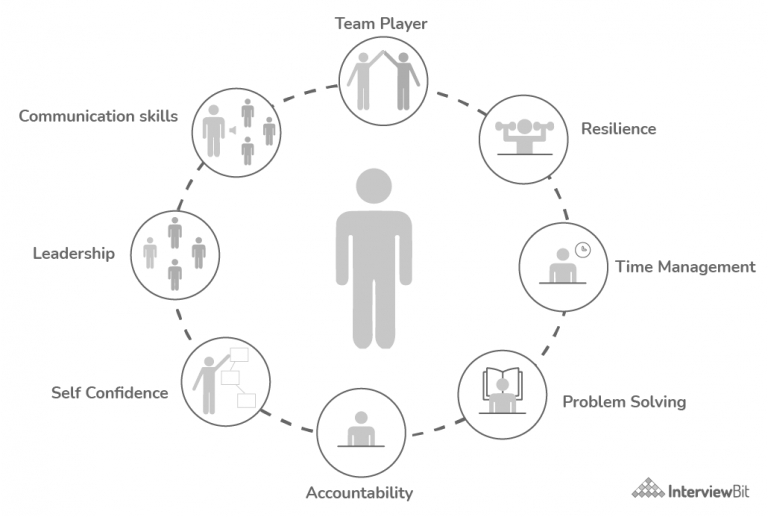
A. Communication Skills in Tech Environments
1. Clarity in Technical Communication
Effectively articulate complex technical concepts with clarity. Precision in your explanations, whether in code documentation or team discussions, is vital. This ensures seamless collaboration and understanding across diverse technical backgrounds.
Platforms like Coursera offer courses like “Communication Skills for Engineers“, helping you enhance your ability to articulate technical concepts effectively.
2. Active Listening
Master the art of active listening. Pay close attention to your team members, clients, or stakeholders. This not only fosters a collaborative atmosphere but also enables you to comprehend project requirements thoroughly, reducing the chances of miscommunication.
Explore LinkedIn Learning’s “Listening Skills for Technical Professionals” to refine your listening prowess in a tech context.
3. Collaborative Problem-Solving
Cultivate the ability to collaboratively solve problems. Communicate your thoughts on troubleshooting steps, involve team members in discussions, and appreciate diverse perspectives. This fosters an environment where solutions emerge collectively, leveraging the strengths of the entire team.
Find suitable courses and resources on edX to cultivate your ability to collaboratively solve problems. These courses provide insights into effective communication, troubleshooting steps, and fostering a collaborative problem-solving environment within a team.
4. Effective Documentation
Demonstrate proficiency in documenting your code and project processes. Clear and comprehensive documentation serves as a valuable communication tool. It aids team members in understanding your work, promotes knowledge sharing, and facilitates a smooth handover if needed.
Check out Udemy’s “Technical Writing: How to Write Software Documentation” to elevate your documentation skills in a developer’s context.
5. Adaptability in Communication Styles
Tailor your communication style to suit your audience. Whether interacting with developers, non-technical stakeholders, or team leads, adjust your language and level of technical detail. This adaptability ensures that your messages resonate with different audiences, fostering effective communication.
Websites like Atlassian University provide resources to enhance your proficiency in project management and communication tools.
By honing these communication skills, you elevate your profile as a full stack developer. Beyond technical prowess, your ability to communicate clearly, listen actively, and collaborate effectively enhances your value in tech environments and contributes to overall project success.
B. Problem-solving and Adaptability
1. Analytical Thinking Proficiency
Develop the knack for breaking down intricate problems into manageable components. Explore resources on platforms like Codecademy, where you can practically learn technical concepts, and test & hone your knowledge to enhance your analytical thinking, enabling a systematic approach to problem-solving.
2. Resourceful Approach
Cultivate resourcefulness in finding creative solutions to challenges. Engage with learning platforms such as edX, where you get opportunities to utilize the acquired skills and knowledge innovatively.
3. Embracing Change
Embrace change willingly, adapting swiftly to evolving technologies. Leverage insights on platforms like LinkedIn Learning to manage change effectively, ensuring adaptability in the ever-changing tech landscape.
4. Continuous Learning Mindset
Foster a mindset of continuous learning to stay ahead in the field. Platforms like Coursera offer courses emphasizing the importance of lifelong learning, urging you to adapt your skill set to emerging trends in full-stack development.
5. Practical Problem-solving Skills
Apply problem-solving skills to real-world scenarios, enhancing your ability to tackle challenges effectively. Participate in coding challenges and practical exercises, preparing yourself for the diverse problem-solving demands in full-stack development.
Thus, by refining these problem-solving and adaptability skills, you position yourself as a resilient full stack developer, adept at navigating complexities and evolving alongside the dynamic demands of the tech industry.
VIII. Networking and Building Professional Relationships
A. Leveraging Social Media and Professional Platforms
1. LinkedIn Proficiency
Master the art of presenting your professional journey on LinkedIn. Optimize your profile with a professional photo, comprehensive work experience, and a concise summary. Engage with industry groups and discussions to expand your network.
Here are a few more helpful insights to grow on LinkedIn:
- Profile Headline Tips: Highlight all of your core technological skills like Javascript, Python, React, etc., so that needy recruiters will easily identify your profile. Also, include relevant keywords and notable project contributions.
- Proactive Skill Endorsements: Actively seek endorsements for your skills and request thoughtful recommendations. These serve as social proof of your professional credibility.
- Engage Through Content Sharing: Regularly share articles or updates on technology, frameworks, programming languages, etc. Engage with others’ content through thoughtful comments.
- Participate in Relevant Groups: Join and actively contribute to LinkedIn groups like Full Stack Developer Group, Web Design and Development, UX/UI, Web Standards Design + Development, etc., for expanded networking opportunities and insights.
- Optimize ‘Open to Work’ Feature: Use the ‘Open to Work‘ feature to get a listing of above 10000 Full Stack Developer jobs in India. Hundreds of open positions are added to this list every day.
- Showcase Continuous Learning: Highlight ongoing learning experiences such as courses or certifications to display your commitment to professional growth.
- Personalized Connection Requests: Customize connection requests with a brief, personalized message expressing common interests in technologies, projects, etc., to increase the chances of positive responses.
2. Twitter for Tech Insights
Utilize Twitter to stay updated on tech trends and engage in conversations. Follow thought leaders, participate in relevant discussions using industry hashtags, and share your insights. It’s a dynamic platform for building your online presence.
Discover like-minded developers on Twitter “X Communities”, we have dug a few for you here:
3. GitHub Contributions
Showcase your coding prowess on GitHub. Regularly contribute to open-source projects, comment on others’ code, and maintain a robust repository of your work. GitHub is not just a code repository; it’s a powerful networking tool.
4. Participate in Forums
Engage in tech forums like Stack Overflow or Reddit. Answering queries, sharing knowledge, and seeking advice can build your online reputation. It’s a valuable way to connect with developers globally and establish your expertise.
Leveraging social media and professional platforms strategically not only expands your professional network but also plays a vital role in understanding how to get a IT job with no experience. By actively participating, sharing insights, and connecting with professionals in your field, you enhance your visibility in the tech community and increase your chances of landing the right opportunities.
B. Attending Meetups and Tech Events
Online Events and Webinars
Attend virtual tech events and webinars. Platforms like Meetup and Eventbrite host a plethora of online gatherings. Engage actively, ask questions, and connect with attendees through virtual networking sessions. It’s an excellent way to forge connections in the digital space.
Check out a few developer conferences happening in India during April-May months:
- THE PRINCIPAL DEV – Masterclass for Tech Leads: Certification masterclass for software engineers.
- CLEAN ARCHITECTURE MASTERCLASS: Certification masterclass for Java developers.
- GREAT INTERNATIONAL DEVELOPER SUMMIT: Full-stack conference in Bengaluru, India.
- KAFKA SUMMIT BANGALORE 2024: Full-stack conference in Bengaluru, India.
Tech Conferences
India is growing in popularity for thriving startups and as a future Silicon Valley, hosts a number of Tech conferences often. Listing down a few of them here, that you might be interested in:
Attending meetups and tech events is not just about expanding your network; it’s an opportunity to learn, share, and immerse yourself in the vibrant tech community. Make the most of these gatherings to advance your career and build lasting professional connections.
IX. Crafting an Impactful Resume
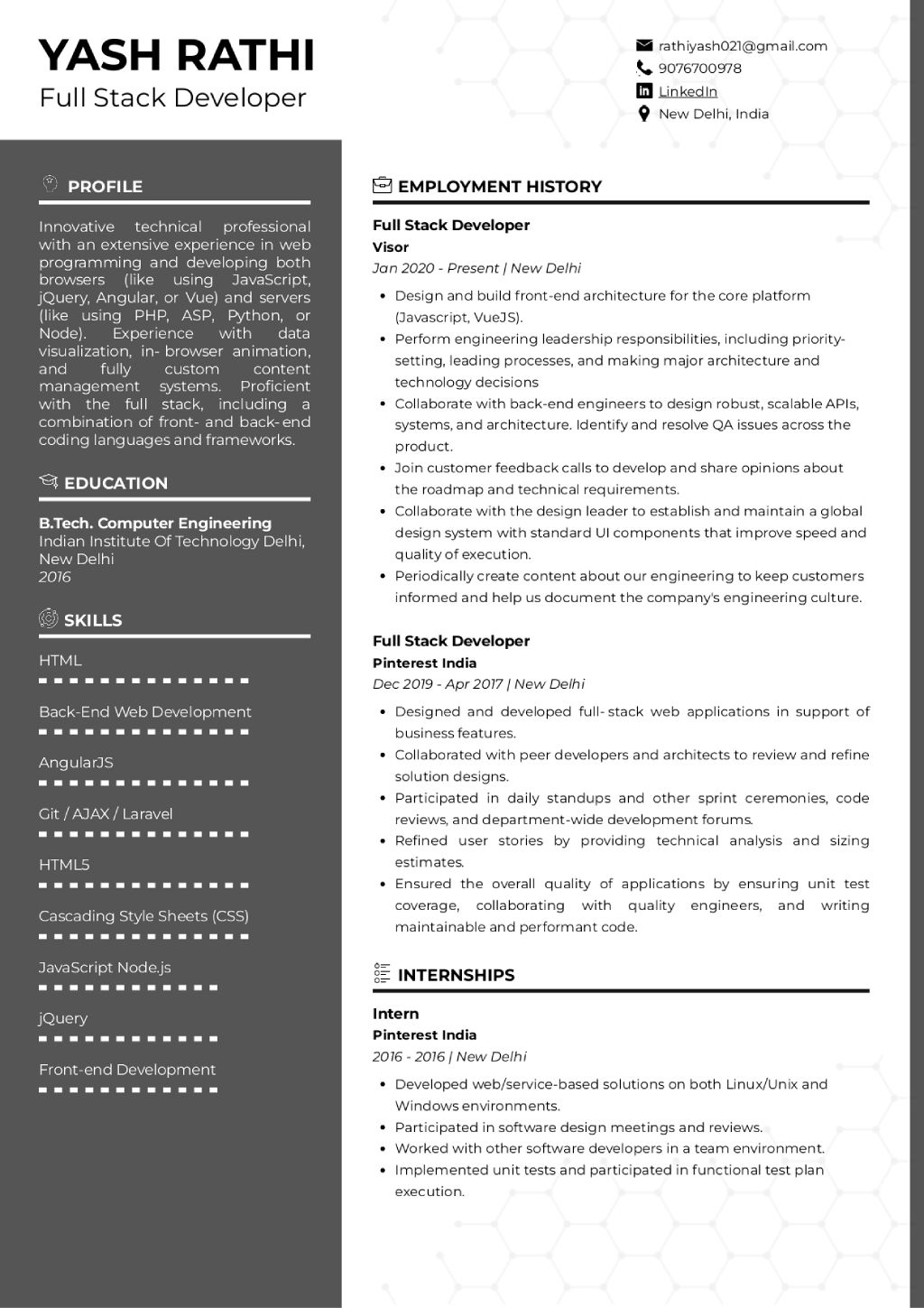
A. Tailoring Your Resume for Full Stack Roles
1. Clear Contact Information
Start by providing your name, contact number, and professional email address. Ensure clarity for recruiters to contact you easily.
2. Professional Summary
Craft a concise professional summary highlighting your passion for full stack development and key skills. Capture the recruiter’s attention with a brief overview of your career goals.
3. Skills Section
Showcase relevant technical skills such as programming languages, frameworks, and tools. Highlight both front-end and back-end proficiencies, emphasizing your versatility.
4. Education Details
Include your educational background, mentioning your degree, major, university, and graduation date. For freshers, this section holds significant weight.
5. Projects Portfolio
Feature a section dedicated to your projects. As a fresher, you might not hold any on-field experienced projects to present, though you may mention some of your project ideas like
- Idea #1 – Developed a web application to monitor the influence of pre-run food consumption on performance.
- Idea #2 – Designed a tool for my neighborhood newspaper delivery boy, using the Google Maps API to streamline and optimize his delivery routes.
- Idea #3 – Created an efficient toy and food inventory management system for the community’s animal shelter, reducing loads of manual work and time.
Otherwise, if you have already developed some as part of your internship or training phase, then provide links to GitHub or project repositories. Describe each project briefly, emphasizing your role, technologies used, and the project’s impact.
6. Internships and Work Experience
Detail any internships, work experiences, or relevant projects undertaken during your academic journey. Emphasize accomplishments and contributions made.
7. Certifications and Courses
Highlight certifications and relevant courses completed. This demonstrates your commitment to continuous learning and acquiring industry-relevant skills.
8. Awards and Recognitions
If applicable, include any academic or coding competition awards, hackathon recognitions, or achievements that showcase your capabilities.
9. Professional Memberships
Mention memberships in relevant professional organizations or tech communities. This reflects your commitment to staying engaged in the tech industry.
10. References
Optionally, include references or testimonials from professors, mentors, or industry professionals. Ensure their consent before listing their details.
Tailoring your resume for full-stack roles involves presenting a well-structured document that showcases your skills, projects, and experiences. Make it easy for recruiters to see your potential by emphasizing your technical proficiency, versatility, and commitment to ongoing learning.
X. Preparing for Technical Interviews
A. Common Technical Interview Topics
1. Data Structures
Be well-versed in fundamental data structures like arrays, linked lists, stacks, and queues. Comprehend how they work and when to apply them.
2. Algorithms
Brush up on algorithmic concepts such as sorting, searching, and dynamic programming. Practice solving problems to enhance your algorithmic problem-solving skills.
3. Database Concepts
Familiarize yourself with basic database concepts, including normalization, indexing, and SQL queries. Learn the organization and retrieval of data in databases.
4. Object Oriented Programming (OOP)
Grasp the principles of OOP, including concepts like encapsulation, inheritance, and polymorphism. Be prepared to apply these principles in coding scenarios.
5. System Design
Practice designing scalable and efficient systems. Understand concepts like load balancing, caching, and database optimization.
6. Web Technologies
Have a strong understanding of web technologies, including HTTP, RESTful APIs, and how the client-server model works. Also, grasp the basics of HTML, CSS, and JavaScript.
7. Coding Challenges
Engage in coding exercises available on websites such as LeetCode and HackerRank. Strengthen your problem-solving skills and get accustomed to coding under time constraints.
8. Version Control
Understand the basics of version control systems like Git. Be familiar with common Git commands and workflows.
9. Operating Systems
Refresh your knowledge of basic operating system concepts, including processes, threads, memory management, and file systems.
Preparing for common technical interview topics ensures you’re equipped to tackle a variety of questions and showcase your proficiency during technical rounds. Focus on mastering these foundational concepts to excel in your upcoming interviews.
B. Strategies for Success
1. Understand & Discuss the Problem
Before you start to write the code, read the problem thoroughly, understand it well, and do not hesitate to ask questions, if you have any, to the interviewer.
You can even discuss your approach strategies and possible solutions. Furthermore, seek feedback, so that, you can provide them with a clear solution.
2. Practice Before Appearing for the Interview
Consistent practice gives you the confidence to solve any type of coding problem that you face in the interview. Additionally, follow these tips to ace the interview:
- Out-of-the-Box Methods: Practice writing codes without using features like auto-complete, key-bindings, dual-screen, custom dotfile, etc.
- Practicing Platforms: You can do home assignments, or try challenges and quizzes on portals like Kata – Coding Dojo, LeetCode, HackerRank, Code Conquest, etc.
3. Keep Calm & Composed
We understand that the technical rounds are challenging and you may also feel a mental meltdown. Yet, stay composed, take a moment to think through, discuss your thought process, and present solutions. Interviewers look for candidates who can handle pressure situations.
4. Write clean and efficient code
As Grady Booch puts it,
“Clean code is simple and direct. Clean code reads like well-written prose. Clean code never obscures the designer’s intent but rather is full of crisp abstractions and straightforward lines of control.”
In short, a clean code should be simple, and easy to read and understand. Here are a few pointers that will help you write clean codes:
a. Write Descriptive Names: While writing names for variables, functions, classes, modules, directories, etc., use names that clearly convey the meaning of what it is used for.
For example, int b; // number of users.
b. Single Responsibility Principle (SRP): Your code should be short and convey one action only. Do not use nested structure or give multiple indent levels.
For example, function subtract(x, y) {
return x – y;
}
c. Create Code That’s Easy to Read: Many, particularly freshers like you, tend to stuff everything in one line, neglecting proper indentation, whitespace, and line breaks. Please remember that your coding style remains a lasting impression in the minds of your interviewers.
For example,
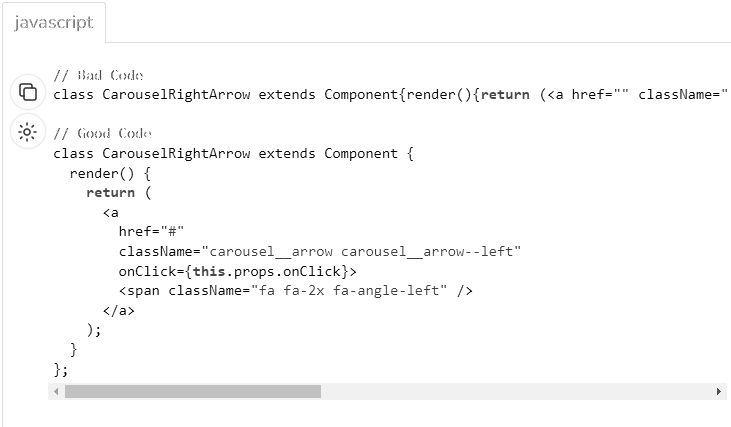
d. Run Unit Tests: First, write the Test Driven Development (TDD) cases and run the unit tests that let you develop customizable and bug-free codes.
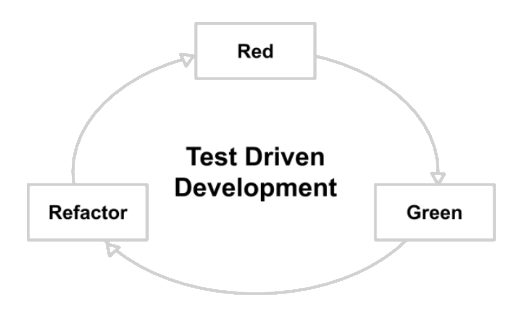
5. Stay Updated
Keep abreast of industry trends and emerging technologies. Technical interviews often include questions on the latest advancements, so staying informed enhances your overall readiness.
XI. Navigating Job Search Platforms
A. Best Platforms for Full Stack Job Opportunities
1. LinkedIn
Build a comprehensive professional profile, follow companies, and utilize job search features on LinkedIn to discover a wide range of full-stack opportunities.
2. Indeed
Set up personalized job alerts on Indeed to stay informed about the latest full stack developer positions. The platform offers a diverse array of job listings.
3. Glassdoor
Explore company reviews, salaries, and available job positions on Glassdoor. Gain valuable insights into potential employers and find suitable full-stack roles.
4. Dice
As a specialized platform for tech professionals, Dice provides tailored job listings for full stack developers. Customize your search to align with your preferences.
5. Stack Overflow Jobs
Leverage Stack Overflow Jobs, a hub for developers, to showcase your expertise and explore job listings specifically curated for full stack development roles.
B. Crafting an Effective Online Presence
- LinkedIn Optimization: Enhance your LinkedIn profile with a professional photo, detailed work history, and relevant skills.
- GitHub Showcase: Exhibit your coding projects on GitHub to demonstrate practical expertise in full stack development.
- Active Participation on Tech Platforms: Engage in tech discussions on platforms like Stack Overflow to showcase and validate your knowledge.
- Personal Website or Portfolio: Create a personal website or portfolio highlighting your projects and achievements.
- Consistent Professional Image: Ensure a consistent and professional online image across various platforms.
Crafting a robust online presence not only attracts recruiters but also positions you as a standout candidate in the competitive full stack job market.
Recommended article – Remote Coder Companies Hiring for Medical Coding Jobs
XII. Salary Negotiation Tips
A. Researching Industry Standards
- Glassdoor: As per Glassdoor, the average salary of a full-stack developer in India starts from ₹4 lakhs.
- AmbitionBox: States that a fresher can earn ranging from ₹1.8 lakhs and grow up to ₹16.2 lakhs with experience.
- InterviewBit: For an entry-level professional, the pay is around ₹3.7 lakhs.
- UpGrad: Reports show that the growing demand for novice developers like you with unique skills and a constant learning attitude can attract an average salary of ₹6.2 lakhs.
- Crampete: This institute estimates the average base salary of a beginner is ₹4.7 lakhs and ₹6.6 lakhs with experience of up to 4 years.
Armed with this data, you can confidently negotiate a compensation package that aligns with both your skills and the prevailing industry norms.
B. Effective Negotiation Strategies for Freshers
Entering the job market as a fresher in India can be both exciting and challenging. When it comes to negotiating your full-stack developer salary, consider these effective strategies tailored for newcomers like yourself.
1. Research Industry Standards
As you delve into negotiating your salary, revisit the valuable insight from our earlier discussion about researching industry standards.
2. Highlight Your Unique Value Proposition
Highlight the worth you contribute during negotiations. Showcase your skills, relevant projects, and any additional certifications. Illustrate how your capabilities align with the company’s goals, reinforcing why you’re a valuable asset.
3. Consider Non-Monetary Benefits
Salary is important, but also consider non-monetary benefits. Flexible working hours, remote work options, and professional development opportunities contribute significantly to your overall job satisfaction.
4. Express Enthusiasm and Willingness to Learn
Communicate your eagerness to contribute and learn within the company. Employers value enthusiasm and a proactive attitude. Express your dedication to growing with the organization, and creating a positive impression.
5. Negotiate with Confidence
Approach negotiations with confidence. Practice beforehand, be clear about your expectations, and remember that salary discussions are a standard part of the hiring process. Be assertive yet professional in expressing your needs.
Navigating salary negotiations as a fresher in the Indian job market requires a strategic approach. By combining industry knowledge, self-promotion, and consideration of non-monetary benefits with enthusiasm and confident negotiation skills, you’ll not only secure a competitive salary but also understand how to get into tech with a strong foundation and favorable terms.
Remember, you bring unique skills and perspectives to the table, and your compensation should reflect the value you contribute to the organization.
XIII. Continued Learning and Skill Enhancement
A. Embracing a Lifelong Learning Mindset
In the rapidly evolving field of full stack development, embracing a lifelong learning mindset is essential for staying relevant and competitive in the job market.
According to a survey by LinkedIn, 94% of employees would stay with a company longer if it invested in their learning and development.
This statistic underscores the importance of continuous skill enhancement in today’s dynamic tech landscape.
To thrive in your full stack developer career, cultivate a mindset of perpetual growth and curiosity. Explore new technologies, enroll in online courses, attend workshops and webinars, and actively participate in coding communities. By consistently expanding your skill set and knowledge base, you position yourself as a valuable asset to employers and open doors to exciting career opportunities.
B. Staying Updated with Industry Changes
According to a survey by LinkedIn, 63% of executives agree that continuous learning & development would help their employees adapt to the changes in the industry.
Remaining current with industry shifts is crucial in the dynamic field of full stack development.
52% of technologists highlight the necessity of ongoing learning to adapt to emerging trends amidst economic uncertainty. They believe that acquiring new tech skills is crucial for both personal and organizational success.
To stay ahead, allocate time for reading tech blogs, following industry leaders on social media, and attending webinars and conferences. Active participation in online communities fosters knowledge exchange and networking opportunities. By embracing continuous learning, you enhance your expertise and competitiveness in India’s bustling full stack developer job market.
Recommend article – How To Get The Highest Paying Full Stack Developer Job?
Conclusion
In conclusion, embarking on your journey as a full-stack developer as a fresher in India might feel overwhelming. But, with proper tools, knowledge, and tactics, success is within reach. Remember to continuously hone your skills, stay updated with industry standards, and actively network with fellow professionals.
Your future as a successful full-stack developer awaits! All the best!
